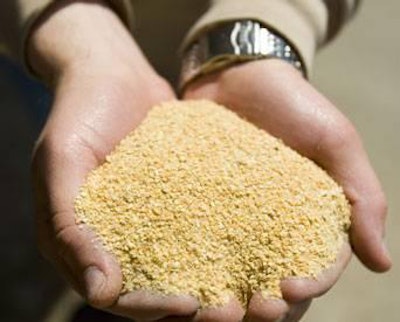
Protein content of soybeans has declined almost 4% in last half-decade, nutritionist says
Soybeans just aren’t worth what they used to be in terms of protein content.
Since 2013, soybeans have lost almost 4% of their protein content, according to the soybean checkoff-funded High Yield PLUS Quality program. Though traditionally thought to consist of 48-48.5% crude protein, soybean meal this year is measuring 46-46.5% protein, Borg said. Soybeans have also lost critical amino acid content.
Though this year is a particularly low year, Bart Borg, director of nutrition at Standard Nutrition Services, said the protein content of soybeans has declined steadily since at least 2013. The decline now appears to be a consistent trend, though average protein content varies from one year to a next.
“It’s very visible, to just look at protein content coming out of certain soy processing plants,” Borg said. “There is a substantial drop again this year.”
Weather, Borg said, appears to play an important role in year-to-year variations in nutritional value. Cold, wet weather during the 2019 growing season is the likely reason the year’s soybean harvest has such low protein content, he said.
“As you move from the southern U.S. to the northern U.S., there is a noticeable difference in protein content,” Borg said. “That in itself says weather matters. Growing season length matters.”
However, weather alone doesn’t explain the overall decline. Because of the consistency of the decline, Borg said he believes that, in selecting seed stock exclusively for its potential yields, producers have unintentionally selected soybean varieties that contain less protein.
Borg doesn’t believe high-yielding soybeans contain less protein inherently. Rather, he suspects that the decline is the result of inattention to the amount of protein a given variety contains.
The decreased protein and amino acid content would, in theory, force nutritionists to order larger quantities of soybean meal to make up the difference in animal feed formulations. But that would be costly. To maintain levels of lysine using today’s soybeans alone, Borg said, would cost 30 cents more per pig fed the all-soybean diet.
Crystalline amino acids, on the other hand, have held their nutritional and financial value, prompting nutritionists like Borg to increasingly choose alternative sources of protein and amino acids over soybean meal.









